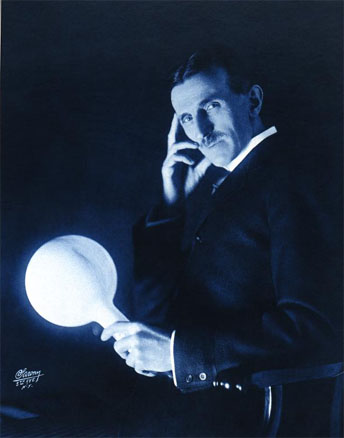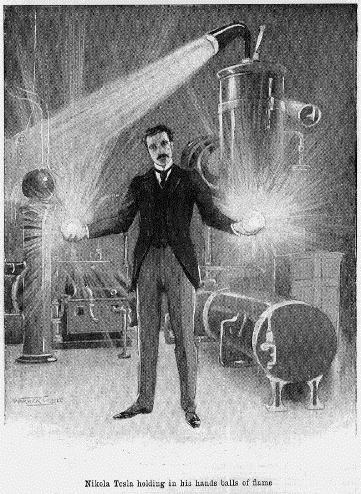Just a warning- I plan
to unleash a great deal of my science nerd potential during this post.
The Wagner Free Institute of Science was a fantastic way to bring closure to the end of this
exciting adventure of Museum Practicum. It has been on my list of places to
visit before the start of Graduate School, and when I saw it on the syllabus
the first day, I was excited to know I would finally be going there. After
going there, I enjoyed its charm, and immediately knew of several close friends
who will also love this place. I think the exciting thing about the Wagner will be sharing it with someone else, as I'm already planning my returning visits.
The lecture hall is what
sold me right from the start. Within seconds of walking in and being there, bam: there was the bang that
that we were ending the semester with. It was amazing. Like walking into a
movie or being transported to the Victorian era of science. Now my immediate
thoughts of the Victorian age of science take me to Nicola Tesla:
scientist bad-a**, who has lately been getting the credit he is
owed, and gaining in popularity.
 |
| Can't you imagine the set up of this lecture hall being identical to one at the Wagner? Wowing all the other white men (ahem) of the time of his amazing feats? Image: http://explorepahistory.com/displayimage.php?imgId=1-2-14D4 |
 |
 |
Images: http://www.diffusionradio.com/2010/04/doc_oc_element_117_and_nikola.html, http://www.teslasociety.com/serbia150.htm
However, the Wagner focuses on the Natural Sciences, which are interesting too (though Tesla Coils and vandergraph generators hold a bigger piece of my heart). Joseph Leidy was a pretty cool vertebrate paleontologist too.
 |
| Leidy with a part of the Hadrosaurus Folkii skeleton. (the one we saw in the closet at the Academy) Image: http://explorepahistory.com/displayimage.php?imgId=1-2-14D4 |
To focus on a single
object in the collection is again a challenge.
However, I was drawn to the mineral collection... again. While we have not had a
chances to encounter collections of minerals, I have found in my own museum
visitation experience in the last 8 or so years that the mineral collection is
where I like to be. I do not have a favorite mineral (yet) but I have always
liked calcite.
Maybe it’s the fact that it fizzes when diluted hydrochloric acid is dropped on it, or that it makes up snail shells, or that the ocean floor is made up of it due to a simpler model of the circle of life, but I find it to be a very interesting mineral. However, I had no idea that it could take up so many shapes and crystalline structures. It was amazing. I wondered if it was something everyone knew and I was just unaware of this common fact, but even as I speaking with Museum Educator Jessica Bachrach, she mentioned one of her favorite things in the collection was all the different types of calcite, I knew it was an impressive collection of calcite. The cleavage (not that kind!!) and crystalline structure were what interested me the most and the way it formed in so many ways. Single planes, twos, threes, and so forth. The triangular specimens were my favorite because of the geometric pattern it created.
 |
| Image: http://www.flickr.com/photos/wagnerfreeinstitute/6836332243/in/set-72157627054737929 |
Calcite Specimen
Purchased in 1908
CaCO3 - Calcium Carbonate
Wagner Collection
Maybe it’s the fact that it fizzes when diluted hydrochloric acid is dropped on it, or that it makes up snail shells, or that the ocean floor is made up of it due to a simpler model of the circle of life, but I find it to be a very interesting mineral. However, I had no idea that it could take up so many shapes and crystalline structures. It was amazing. I wondered if it was something everyone knew and I was just unaware of this common fact, but even as I speaking with Museum Educator Jessica Bachrach, she mentioned one of her favorite things in the collection was all the different types of calcite, I knew it was an impressive collection of calcite. The cleavage (not that kind!!) and crystalline structure were what interested me the most and the way it formed in so many ways. Single planes, twos, threes, and so forth. The triangular specimens were my favorite because of the geometric pattern it created.
 |
| Image: http://nhmu.utah.edu/ |
 |
| Image: http://www.matsminerals.com/calcitSM-54.jpg |
 |
| http://www.gemstones-guide.com/Calcite.html |
 |
| Image: http://www.tumblr.com/tagged/calcite |
The objects, originally came from mineralogist Charles H. Pennypacker. In 1908 they were purchased as a 24-piece collection. They are on
display in a case with other calcite specimens, and the hand-written
calligraphy labels describing them. Having a full case full of the specimens
allowed for comparisons in shape, size, color, and crystalline structure.
Basically the things that any first time geologist is taught to look for, minus
the hardness (which is a 3 on Moh's Hardness scale by the way).
Fields of study to explore would be mineralogy. By learning more about mineral development would explain to me how calcite forms in so many ways, and what it means when it does. Or even better, find myself a time machine and attend this lecture from Mr. Wagner himself:
 |
| Image: http://www.pachs.net/about/view/hendrick_manufacturing/ |
Those not interested in this object could be those with a greater interest in physical sciences and not the biological and natural science fields. Again, Tesla being electrifying.
 |
| Image: http://fierofredo.wordpress.com/2012/07/11/happy-nikola-tesla-day/ |
Those not interested and
opposing views could also be those with little interest in geology and
minerals, and find them to just be "rocks" and exploring calcite
would not be a field relevant the present since it has already been discovered,
analyzed, and explained. However, calcite and limestone have a role
in Global Climate change since it absorbs carbon dioxide and stores it.
Experience and
programming could be just to learn more about rocks and minerals! Lots
of activities exist to learn about mineral characteristics, and
testing hardness and identifying minerals. That way when you are out on hike or
find a cool rock you can identify what it is or what is in it.
To sum up my feelings about the Wagner, Science, Victorian Aesthetics, and Tesla, this advertisement piece done for an event at the Wagner summarizes my feelings nicely.
 |
| Image: http://geekadelphia.com/2012/10/25/a-sip-of-science-electrifying-2012-annual-benefit-cocktail-party-at-the-wagner-free-institute-of-science/ |




